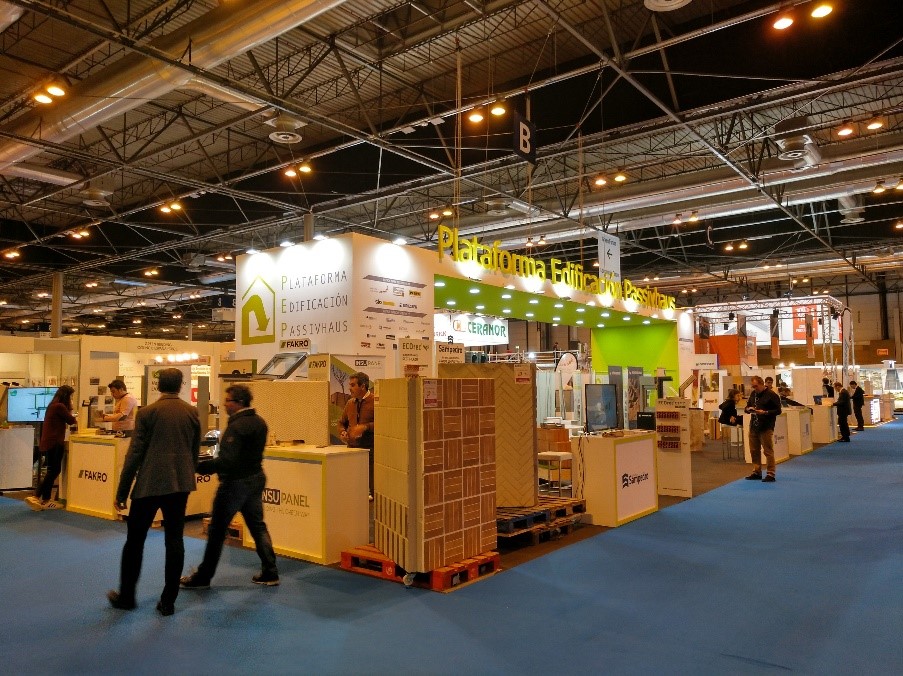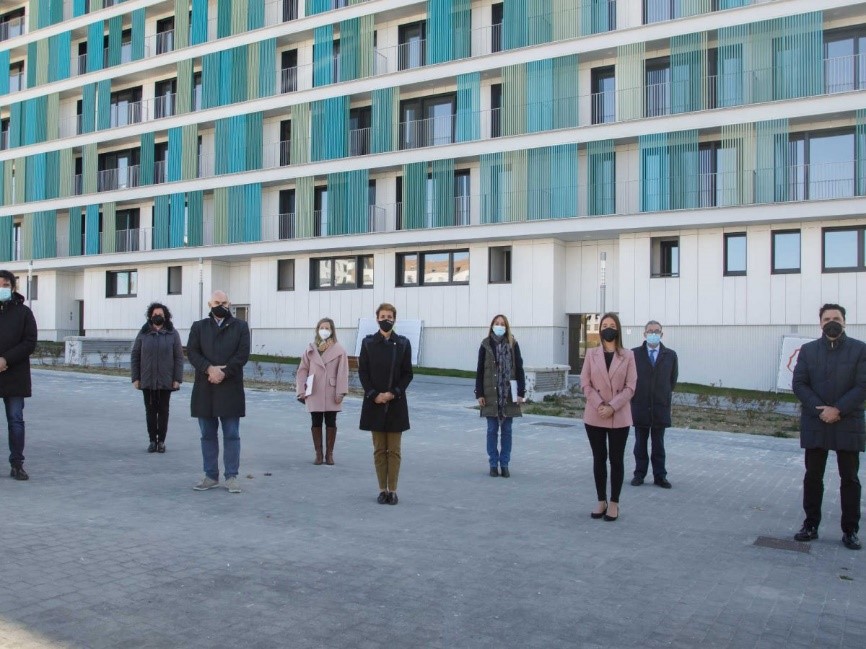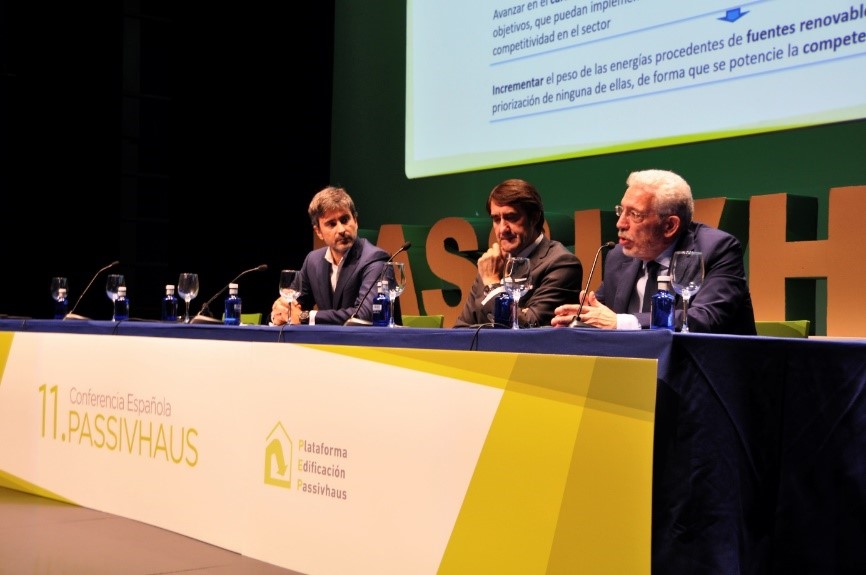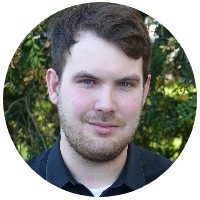The International Passive House Association (iPHA) was founded in 2010 to support the growing global Passive House community, disseminate information on the Passive House Standard and foster a greater public understanding of its significance. iPHA partners with independent Passive House organisations, called ‘affiliates’, all over the world. Over the years, iPHA has seen the number of affiliates and members grow to a massive number of 5000 members and 22 affiliates. This series of interviews highlights iPHA affiliates and their local activities and developments.
Foundation
The Plataforma Edificación Passivhaus (PEP) is a non-profit association that promotes highly efficient buildings. Founded in 2008 by 8 experts from the sector, the association currently has more than 850 members spread throughout Spain.
PEP is dedicated to the dissemination of the Passive House standard and buildings of high comfort and maximum energy efficiency. We are the only association recognized by iPHA in Spain and we are the main forum for knowledge and bringing together professionals specialized in the Passive House standard in our country. Our partners enjoy discounts on software, Passive House events, advantages from the collaborations with other organisations through the agreements we have signed, exclusive live sessions, general support from the association and a network of local and national contacts at their disposal.
Our motto is that you can “live better with less energy“, and with that as a premise, we carry out all our activities.
PEP’s governing board is chosen in our member assemblies, during which a governing board of 9 members is elected. In this governing board, as well as in the assembly, the companies sponsoring PEP are not able to vote. In this way, the most neutral and objective elections are maintained.
Activities
Most of PEP’s activities and projects have a transversal character around the same central axis, the Passive House standard. For example, all PEP sessions, from the informative ones to the more technical papers of the annual conference and technical seminars in professional associations, are open to anyone who wants to attend, whether they are specialists, users, promoters, regulators, or have a completely different profile.
Examples of PEP activities in which technical, social, and institutional goals are mixed are the Spanish Passive House Conference, the participation of PEP in updating the Spanish Technical Building Code or a school monitoring project, among others.
Originally founded by and for technicians, the main goal of the PEP Platform is the dissemination and introduction of the Passive House standard in Spain as a perfectly viable model which ensures buildings with minimal energy consumption and high interior comfort.
Among the main activities of PEP regarding this are training sessions covering the standard in professional associations and training for the public administration’s technical officers.
Companies also support us through different sponsorships or association categories. Among the Premium and Technical Sponsors of PEP are the leading companies with specific products focused on reaching the Passive House standard. These companies are also leaders in their sector and are aware that building better has a direct impact on living better, since we spent more than 80% of our time inside buildings.
Examples of PEP initiatives with a technical perspective are the activities that result from agreements with CGATE, the General Council of Technical Architecture in Spain (technical seminars in professional bodies), the Precio Centro (database of specific PH work budget items), the technical advice provided to its members, the development of specific tools, or the participation in the main events of the sector such as CONSTRUTEC and CONSTRUMAT (with the largest stand of CONSTRUMAT 2019).

The end-user is a fundamental part of the development and implementation of net-zero energy buildings built to the Passive House standard. We work to reach them through dissemination sessions and other activities to facilitate the knowledge and understanding of this kind of building within the public.
The work of PEP and the Passive House standard on the social level is not limited to disseminating knowledge about these buildings but creates a real impact that translates into an improvement within society. PEP activities focused on social aspects are, for instance, the 15 informative sessions held during 2019, the translation of the children’s book “We build a Passive House”, or the energy literacy workshops, among others.

Growth and Development
Although the standard began to be implemented mainly in the north of the Iberian Peninsula, nowadays, it has reached practically all the regions with certified examples of all typologies widespread throughout the country. It is worth highlighting some examples such as those of the Basque Country, Navarra, or Aragon, which have spearheaded these efforts and have opted for this standard both at a public and private level. These regions have the largest concentration of Passive House projects in Spain.
There are currently more than 171,000m2 of Passive House certified in Spain, spread over 161 projects. In addition, the forecasts for the next two years project that we will reach more than 368,000m2 in about 313 projects, according to data collected by the association.
The 171,820m2 of projects already certified, avoid the consumption of 6 million kWh, and stop emitting 1,146 tons of CO2 every year. This equals the amount of CO2 absorbed by 114,000 trees, or in other words, it is equivalent to a forest area the size of 7,6 Retiro Parks in Madrid.
In addition, taking into account the projections from the surveys of PEP members, it is expected that by 2022, we will have 313 certified projects and reach a treated floor area of 368,851 m2. This will avoid the consumption of 12,9 million kWh per year and will stop emitting another 2,460 tons of CO2 each year, the equivalent of that absorbed by 246,000 trees, or in other words, a forest area equal to 16,3 Retiro Parks in Madrid.
It should be pointed out that we are currently taking both, a quantitative and qualitative leap in our country. This evolution is defined as follows:
- In the last 2-3 years the same number of projects have been certified as in the previous 8 year.
- In the last 2-3 years the PH certified area is 3 times bigger than in the previous 8 years.
- In the next 2-3 years the number of certified projects will double.
- In the next 2-3 years the PH certified square footage will triple.
- The quantitative leap will be provided by multi-family buildings, both new constructions and retrofit projects.
- The qualitative leap is a new reality, the technical capacity in our country is demonstrated with flagship projects of different typologies.
Success
The reputation of the Passive House standard in Spain
PEP works every day to offer knowledge about this construction method and to answer to all the doubts that arise about it to technicians and users, as well as regulators and the media.
The result of this work is the good reputation that the standard enjoys in our country, thanks to the involvement of many people in favour of this type of construction. This happens at the technical level, by experts who propose to their clients the adaptation of the standard, as well as the satisfied users who collaborate in dissemination activities, and the media that increasingly gives more credit and attention to the standard in our country.
A fact that illustrates this is the exponential growth of publications and mentions about the Passive House standard in the written and audiovisual media. All in all, there were more than 2,500 news appearances in almost 900 different media outlets during the last year, even reaching influential writing outlets and appearances on national public television on several occasions. We have also participated as interviewees in defence of the Passive House Standard on a national investigative television programme.
Navarra Social Housing and other Passive House social housing actions from public administrations
PEP has positively influenced regulators in several regions of our country, the greatest success story being the “Navarra Social Housing” plan, in addition to other examples such as the projects of the Government of Aragon, the Basque Country, Asturias, etc …
In Navarra, during the 8th Spanish Passive House Conference in Pamplona, and in its institutional work, PEP helped in the re-designing of the “Navarra Social Housing” Plan that was being developed at that time, by advising the technicians and providing reports on the implications, costs, and feasibility of undertaking the Plan, including the execution in the Passive House standard.

Through this work, PEP facilitated the “Navarra Social Housing” plan to include the commitment to certify the 524 dwellings that make up the Plan under the Passive House Standard. A program supported by European funds from the EIB (50% of 86 million euros) and that has introduced a paradigm shift and a revitalization of the sector in the region.
Another example is the collaboration with the Government of Aragon. In 2016, during the 8th Spanish Passive House Conference, this public entity formalized its support of the Manifesto for energy efficiency promoted by PEP. This commitment was initially turned into information and advice on the Passive House Standard by PEP favoured by the General Directorate of Housing and Renovation. Later, it materialized in the first public housing developments retrofitted under the Passive House Standard with EnerPHit certification in Spain. Specifically, the comprehensive refurbishment of two buildings has already been carried out, and the renovation of two more buildings is underway.
Beyond the specific examples of Navarra and Teruel, there are, today in Spain, other examples of Passive House social housing, both private developments for sale and public developments for sale or social renting.
Here, we want to mention the following:
– Bolueta Towers in Bilbao, promoted by the public entity VISESA. The first of these is the highest certified Passive House building in the world so far and has 171 dwellings, 63 social apartments for rent and 108 social apartments for sale. The second tower has 190 social housing units and is currently in the certification process.
– 20 social dwellings in Muros de Nalón, Asturias, publicly promoted by the Government of the Principality of Asturias for social renting. Currently finished and Passive House certified.
– 25 social dwellings in Madrid, promoted by the public entity EMVS for social renting. Currently finished and Passive House certified.
– 16 social dwellings refurbished in Teruel, promoted by the Government of Aragon. Currently finished and Passive House and EnerPHit certified.
– 165 social dwellings in Zaragoza, promoted by a private developer for sale. Currently finished and Passive House certified.
– 150 social dwellings in Madrid, promoted by a private promoter for sale. Currently finished and Passive House certified.
– 88 social dwellings in Valencia, promoted by a private developer for sale. Currently finished and Passive House certified.
Update of the Spanish Technical Building Code in 2019
In 2019, the Spanish Technical Building Code was updated, specifically its Basic Document HE (Energy Saving), a national regulation that all buildings must meet, and which defines what will be considered a Net Zero Energy Building (nZEB) came into force. This update is an important and obligatory step in complying with the European Directives on nZEBs.
PEP participated actively in this updating process, both through public consultation and face-to-face meetings with the Ministry of Public Works and provided additional information to other questions.
A great success was the inclusion of PEP’s main contribution: the concept of airtightness of the opaque envelope and its test (although not mandatory). This was a debuting concept in national regulations and is a clear guideline to achieve nZEBs. We will continue working so that future revisions of the regulations include more concepts that guarantee a better building in our country.
12 editions of the Spanish Passive House Conference

Since its founding in 2008, the PEP Platform has held the Spanish Passive House Conference, the main forum for net zero energy buildings in our country, annually.
This conference, which in its first edition gathered about 100 attendees, has in its last editions exceeded 500 attendees. The conference has also gone from one day to three days, including additional activities such as visits to Passive House buildings of the region or even a trip through the most representative buildings in parts of the country.
The conference has also grown in institutional support, offering institutional sessions with the participation of both technical and political representatives of local and national administrations.
Likewise, the professional presence has increased at the Conference, bringing together more than 35 exhibitors in recent editions.
School Monitoring Study
It is the most ambitious project that we have tackled to date, and we are excited that we were able to carry it out with the available means. We say this because it should be noted that, during much of the development of the project, the means available by PEP were based on the voluntary work of dozens of members committed to better construction, who gave their time selflessly in order to control and communicate the data during the monitoring process.
Also, we formalized an agreement with the University of Burgos to supervise all the statistical treatment of the data and to help us in the design, assembly, and financing of the measuring probes.
In this project, we have monitored and validated the real operating conditions of 36 schools in 33 Spanish cities, evaluating the interior conditions of temperature, relative humidity, and CO2 concentration. As a result, we have validated more than 700,000 parameters, drawing the conclusion that during 84% of the time that students and teachers are in the classroom, the adequate conditions of comfort and interior health are not met.
This study has helped us launch an ambitious dissemination and awareness plan, for which we have already held more than 30 meetings with regulators and associations throughout the country. There have also been several information sessions and several technical presentations on it, allowing us to present a non-legislative motion on this issue to the government.
At the moment, we continue with the dissemination activities with at least 10 more scheduled meetings, and we intend to prolong this project through new activities. Some of them could be pilot renovations to show the possible improvement in these buildings.
The future
The future of the association is decided by the people who participate in it, through their activities and their involvement in the delegations and the governing board. Currently, besides continuing to be the reference for the Passive House standard in our country and continuing with our membership growth, we have several projects to develop in the coming years.
Radon monitoring study – We want to monitor the concentration of radon in conventional buildings and Passive House buildings in our country and show that the latter is an effective way to fight against this dangerous gas.
Regulation Blower Door – Before the introduction of this concept in the update of the Spanish Technical Building Code, this test is becoming better known and is in more demand in our country. However, we identified that there is a lack of knowledge and possible errors in the testing. We have set up a working group to try to provide knowledge and measures to ensure that these Blower Door tests are performed correctly.
Training for Administration officers – We have recognized that some administrations cannot access Passive House training due to a matter of resources, a situation that PHI recognized trainers in our country cannot cover by themselves. We have requested and been granted recognition as trainers to solve this situation.
Translations – We are translating the technical documentation that we find relevant and interesting about the Passive House standard. We mainly translate documentation from PHI and Passipedia but also from other associations or sources.
Are you enjoying this new iPHA meet the affiliates series? If you are, make sure to come back every Tuesday to read about a new affiliate each time. You can find our previous interview with the Australian Passive House Association here.






 Carl supports our international communication activities and is the point of contact for administrative enquiries.
Carl supports our international communication activities and is the point of contact for administrative enquiries.